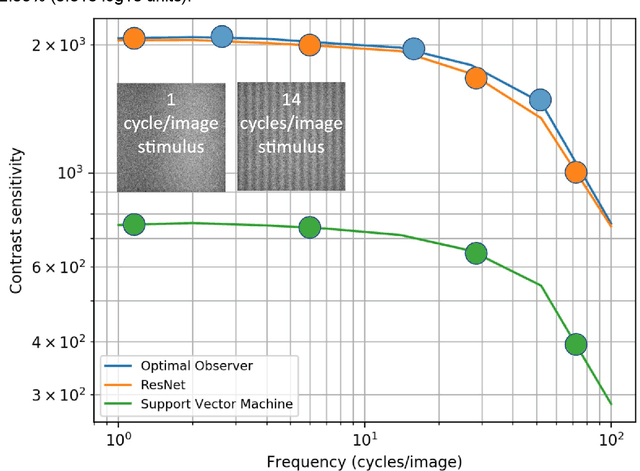Fabian Reith
Comparing pattern sensitivity of a convolutional neural network with an ideal observer and support vector machine
Nov 12, 2019



Abstract:We investigate the performance of a convolutional neural network (CNN) at detecting a signal-known-exactly in Poisson noise. We compare the network performance with that of a Bayesian ideal observer (IO) that reflects the theoretical optimum in detection performance and a linear support vector machine (SVM). For several types of stimuli, including harmonics, faces, and certain regular patterns, the CNN performance matches the ideal. The SVM detection sensitivity is approximately 3x lower. For other stimuli, including random patterns and certain cellular automata, the CNN sensitivity is significantly worse than that of the ideal observer and the SVM sensitivity. Finally, when the signal position is randomized, so that the signal can appear in one of multiple locations, CNN sensitivity continues to match the ideal sensitivity.
 Add to Chrome
Add to Chrome Add to Firefox
Add to Firefox Add to Edge
Add to Edge